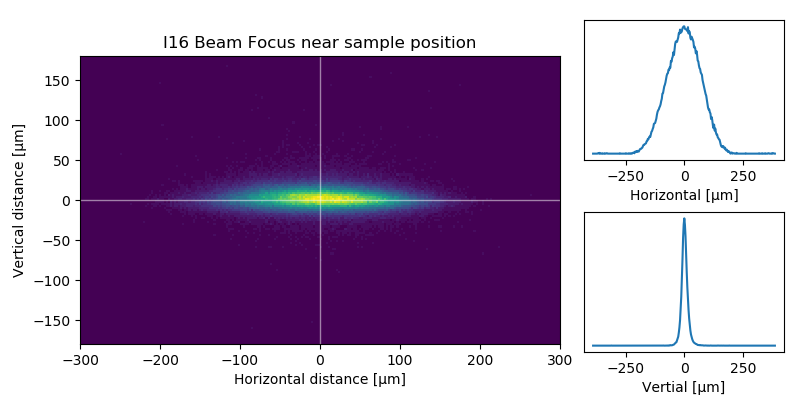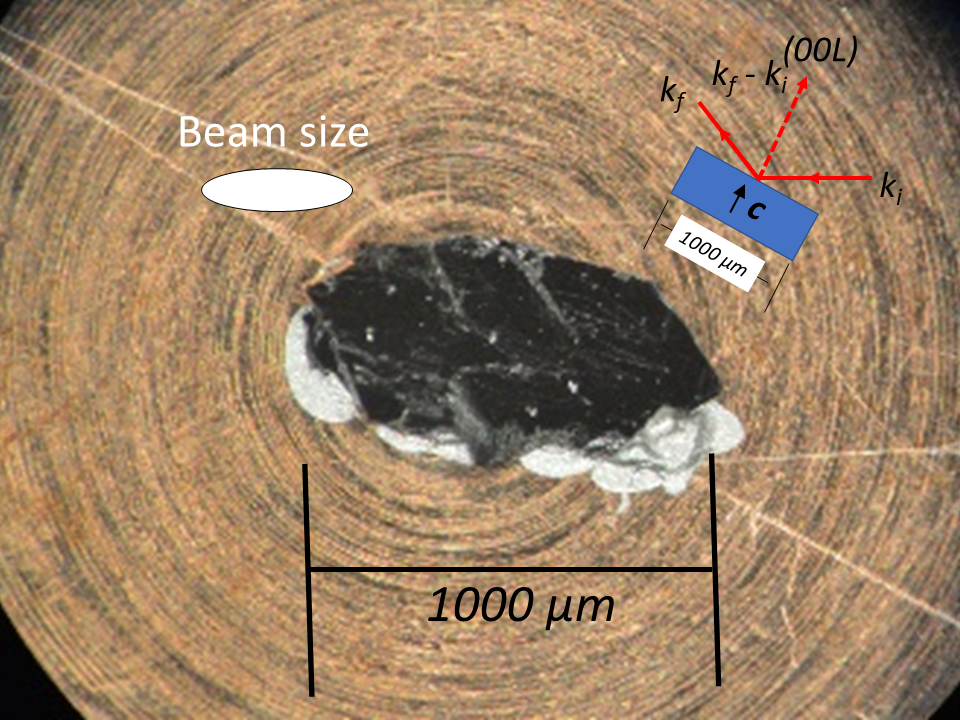Beamline Phone Number:
+44 (0) 1235 778711
Principal Beamline Scientist:
Alessandro Bombardi
Tel: +44 (0) 1235 778087
E-mail: [email protected]
Email: [email protected]
Tel: +44 (0) 1235 778056
The beamline operates in the hard x-ray energy range, from 2.7 to 20 keV. This energy range provides access to the K edges of 3d transition metals, L edges of 4/5d transition metals and M edges of several actinides.
In normal conditions with the main mirrors fully focussed, the beam size is approximatley 200 microns horizontally by 30 microns vertically.

It is possible to make the beamsize larger by slightly de-tuning the focus mirrors, or it is possible to achieve a smaller focus by using an additional set of KB mirrors - more details are given here: Beamline Equipment
Typically on I16 we measure single crystal samples of size between 50x50x50 microns and 5x5x5 mm, however both smaller and larger sample sizes are possible. More details on sample mounting and geometry are available here: Sample Preparation

Beamtime applications are generated through the User Account System (UAS). A 2 page scientific justification will be required. More details can be found here: Beamtime Applications
The maximum beamtime you can apply for with a single beamtime proposal is 1 week, or 6 days (18 shitfs) of beamtime. Beamline set up, sample mounting, alignment and orientation and crostat cooling tyipically takes 1 shift for routine measurements. If you are unsure how much time your measrement will take, please get in touvh with a member of the beamline team.
Our beamline is optimised for single crystal measurements, however we can still easilly measure powder samples, provided they can be mounted safely (ideally a pelletised form). Looking for magnetic or other weak reflections is extremly difficult from powder samples due to the poor reflectivity of powders and the crystal grain averaged intensities.
A better stratergy may be to select a large, single grain of the powder and isolate that, therefore avoiding the background caused by other crystallites.
Depending on which sample environment is being used, we can achive a large range in temperatures:
| Sample Environment | Temperature Range (K) |
|---|---|
| Standard Cryostat (CCR) (vacuum) | ~6 - 300K |
| Cryofurnace (CCR) (vacuum) | ~15 - 800K |
| Cryojet (N2 flow) | ~80 - 500K |
| Helijet (H2 flow) | ~20 - 300K |
| Sample heater (air) | 300 - 450K |
There are several standard sample environments for low temperature measurments, including the CCR cryostat and cryojet. Magnetic and electric fields can be applied using equipment available on the beamline and these can be combined with the cryostats. More details are available here: Beamline Equipment
Other options, such as electrochemical measurements, are possible but may require additional preparation - please contact a member of the beamline team to discuss what you'd like to achive.
The choice of polarisation analyser depends on three things:
Ideally you need to choose an analyser crystal with a reflection close to 90 degrees (2theta) at your measurement energy, with an analyser mosaic closley matched to your sample. More details, and a full list of available analysers is provided here: Polarisation Control and Analysis
The incident beam horizontally polarised, with a very high degree of polarisation. It is possible to change the polarisation of the incident beam on the sample using the quater-phase retarding, double crystal phase plates. Depending on what energy is required, both circular left/right and rotated linear polarisation may be available.
See more details here: Polarisation Control and Analysis
Beamline I16 has very few optical elements in the direct beam and can achieve a very high photon-flux in the focussed beam. Typically this is ~3x10^13 photons / s on the sample.
The only elements in the beam in the default configureation are:
The channel cut Si (111) monochromator on I16 provides an energy resolutuion of ΔE/E = 10-4.
This equates to 0.25 - 2 eV across the energy range of the beamline.
The motor resolution of the diffractometer motors is typically < 1 mDeg.
Diamond Light Source is the UK's national synchrotron science facility, located at the Harwell Science and Innovation Campus in Oxfordshire.
Copyright © 2022 Diamond Light Source
Diamond Light Source Ltd
Diamond House
Harwell Science & Innovation Campus
Didcot
Oxfordshire
OX11 0DE
Diamond Light Source® and the Diamond logo are registered trademarks of Diamond Light Source Ltd
Registered in England and Wales at Diamond House, Harwell Science and Innovation Campus, Didcot, Oxfordshire, OX11 0DE, United Kingdom. Company number: 4375679. VAT number: 287 461 957. Economic Operators Registration and Identification (EORI) number: GB287461957003.